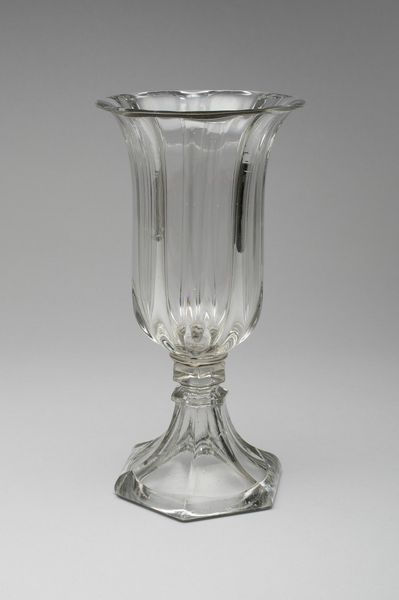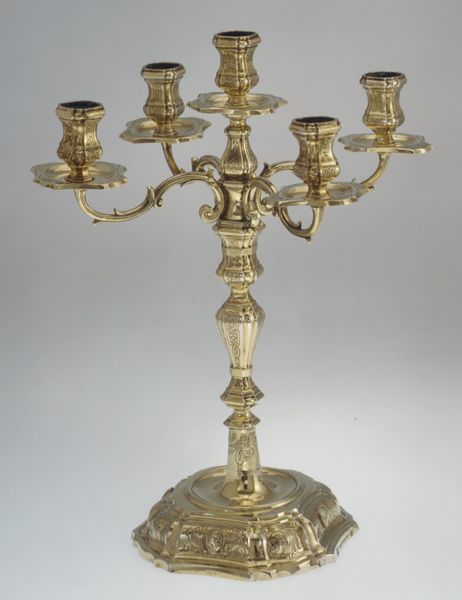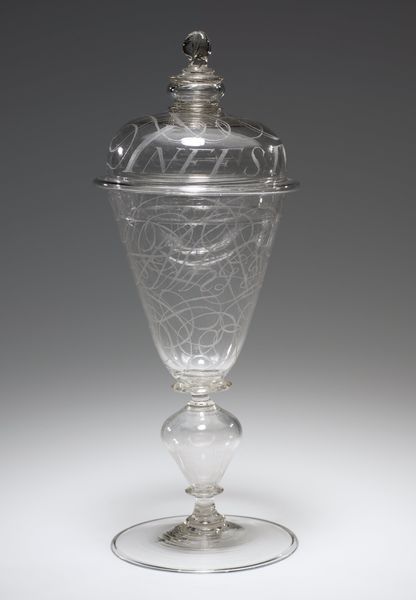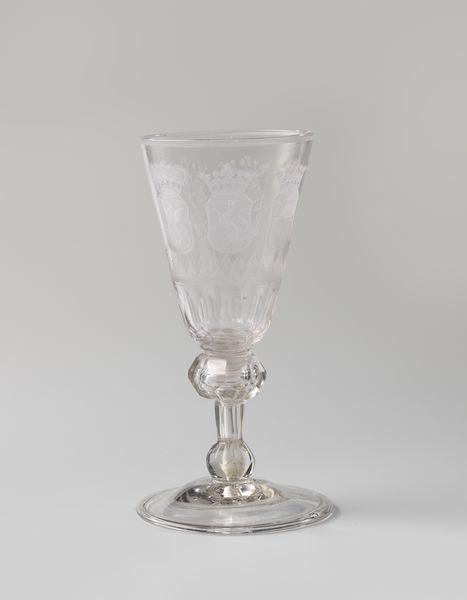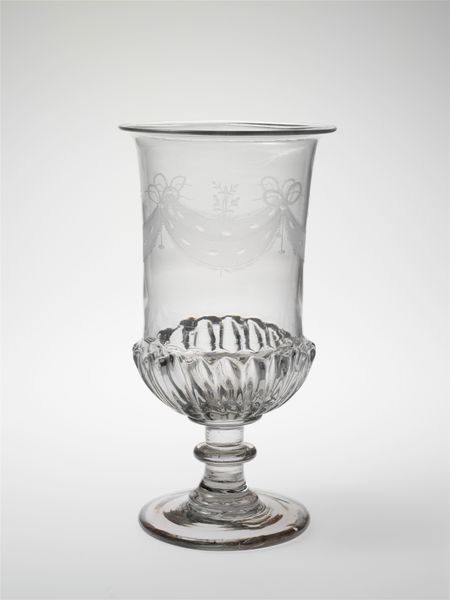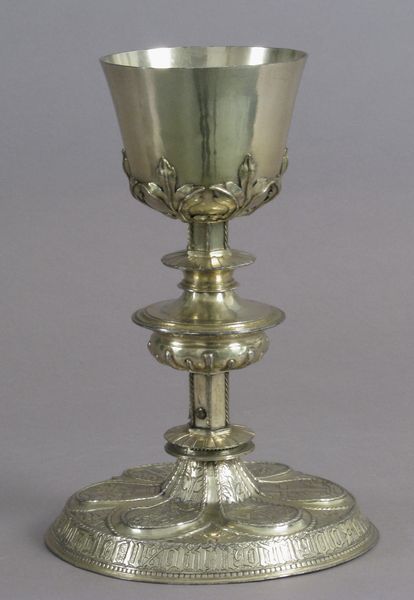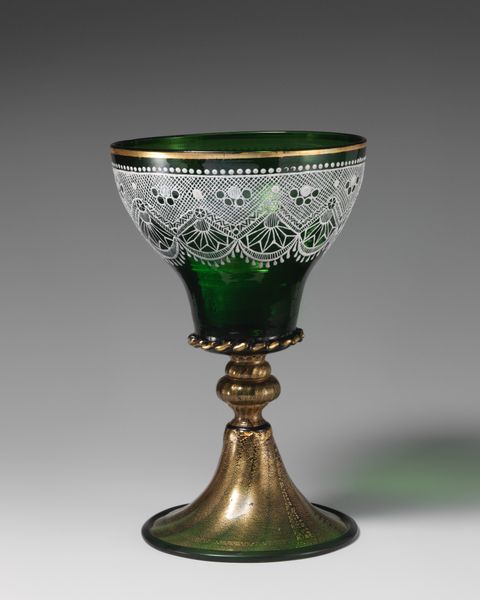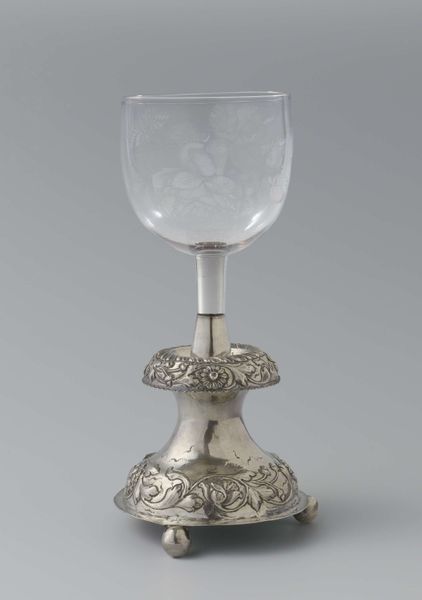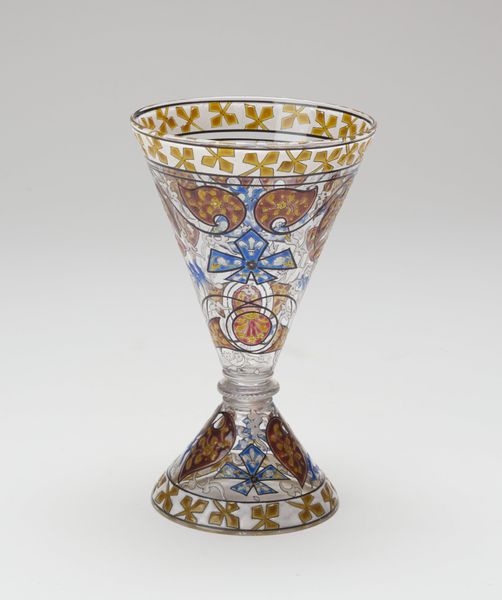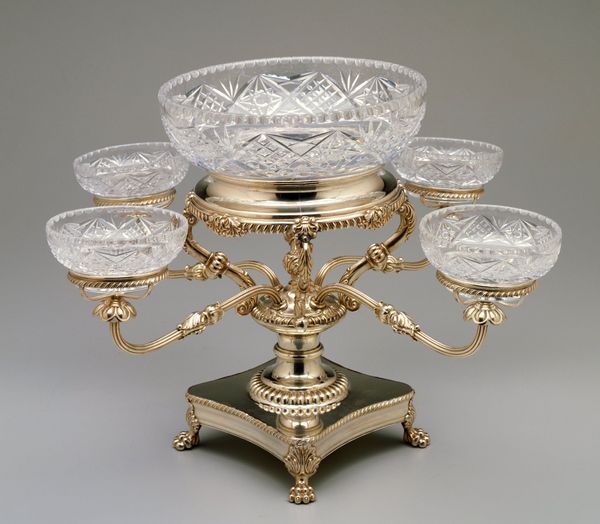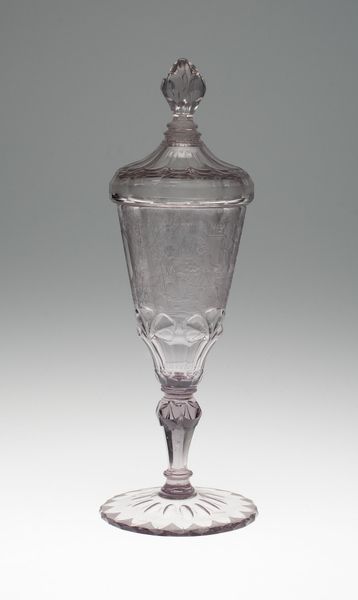
silver, metal, gold, glass, sculpture
#
silver
#
metal
#
gold
#
glass
#
sculpture
#
decorative-art
Dimensions: Height: 9 1/4 in. (23.5 cm)
Copyright: Public Domain
Curator: My word, what an opulent object. Editor: It’s stunning, isn’t it? A feast for the eyes. The meticulous detail is extraordinary. It exudes a sense of refined decadence. Curator: Indeed. We're looking at a standing cup, a showpiece created by Jean-Valentin Morel between 1850 and 1851. It's a masterful blend of gold, silver, glass and various ornamental embellishments. It currently resides here at the Metropolitan Museum of Art. It seems less a functional vessel and more a statement about wealth and power in mid-19th century Europe. Editor: Notice the juxtaposition of the clear, vertically ribbed glass cup with the densely ornamented base and stem. The pearls, the red stones, and the intricate gold work draw the eye. What stories could the symbols on the base tell? Is this piece about luxury? Curator: Without question. Objects like this often served as centerpieces for elaborate dinners, symbols of their owner's elevated status. The value wasn’t just aesthetic; it was an assertion of social position during a period defined by stark class divisions. Consider the role decorative arts played in the political life. A cup like this could be given as a diplomatic gift. Editor: So the materials themselves—gold, silver, pearls—are as crucial as the artistry? Curator: Absolutely. Each element contributed to the overall message of affluence. But consider Morel's choice to blend these precious materials with something as simple as glass. What statement does it create in doing so? Editor: That's where Morel's artistry is remarkable. It's about controlled elegance, using a complex assemblage of materials without crossing into ostentatious gaudiness. Curator: And seeing an object like this reminds us that museums play an active role in creating cultural narratives and establishing hierarchies of value within the art world itself. It is after all here on display today and considered ‘Art’ as we might define it now. Editor: It’s fascinating to see how artistic techniques combine with symbolic materials to elevate something functional into the realm of art. Curator: I think both Morel's intentions and the implications surrounding this work reach beyond aesthetics. Editor: Ultimately, it's an incredibly ornate object, inviting you to pause, to ponder artistry, and to acknowledge history embedded in craft.
Comments
No comments
Be the first to comment and join the conversation on the ultimate creative platform.


